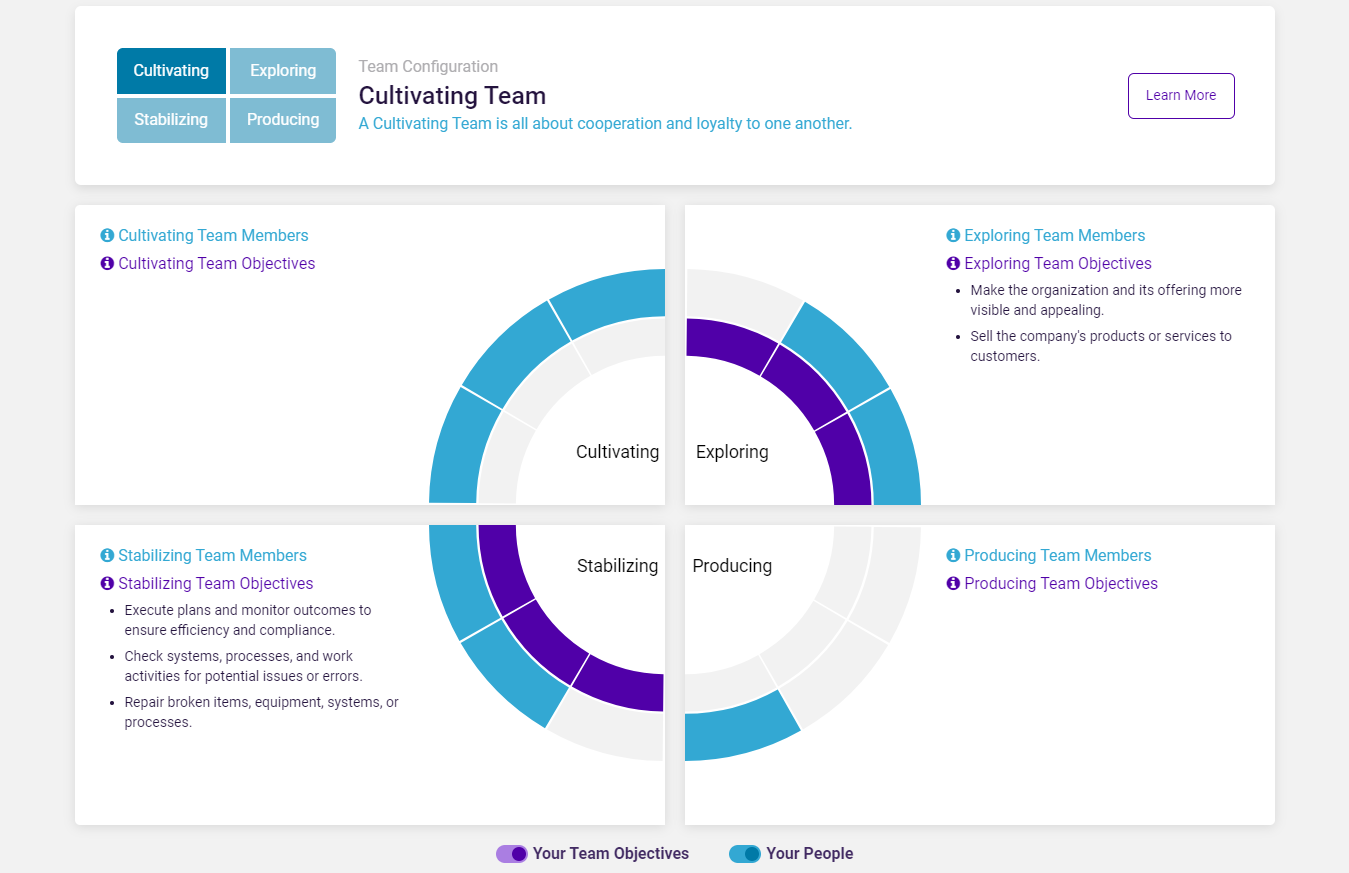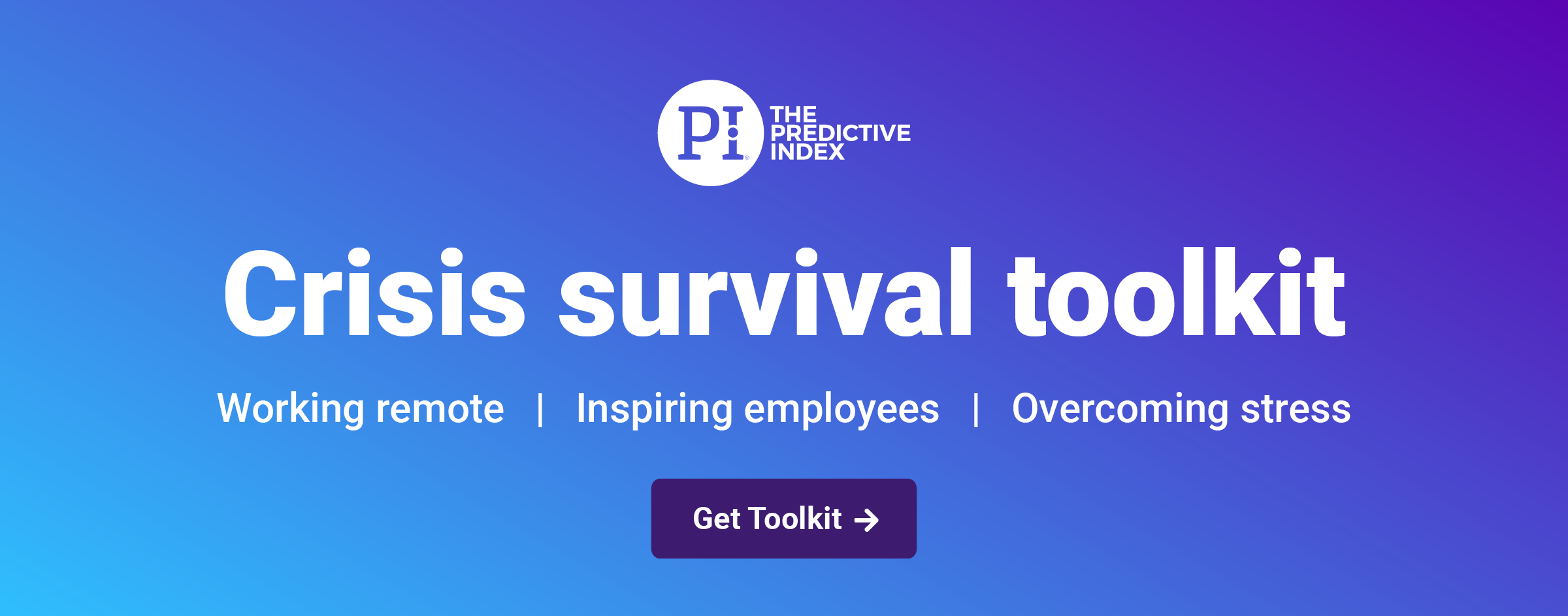By this point, your company has made the difficult initial decisions required to survive the economic downturn. Maybe you’ve switched to remote work, furloughed employees, or made other hard, yet necessary, strategic adjustments.
But business conditions are still very much in flux. So what’s next?
Now’s the time to continue evolving, so your company is positioned to not only endure but emerge stronger once macroeconomic circumstances improve. One of the most practical ways to evolve is by developing leadership capacity in yourself and other executives to inspire people throughout the organization.
Start with a team alignment session. PI’s Leading in Crisis workshop provides a framework you can use to:
- Adapt how you lead.
- Realign operations.
- Unfreeze your people.
Here’s how to apply each of these steps within your company’s evolution:
Adapt how you lead.
You need to be especially self-aware during times of crisis. That starts by understanding the behavioral drives you exhibit most strongly, and recognizing when you’re leaning too heavily on them. For example, a high-dominance/low-formality profile may lend to healthy risk-taking under normal business conditions. But over-relying on that tendency during a crisis may do your organization more harm than good.
Think about how your team is configured, and how that aligns with your updated strategy and goals. Ask yourself:
- Is your leadership team balanced?
- Are there complementary personalities in place?
- Will you hold each other accountable?
- Do we need to build leadership capacity?
Identify who’s best equipped to handle ongoing decisions and company communications, based on how each member is behaviorally wired (and how they might be received). With the leadership team on the same page, you can move on to the next set of priorities.
Realign operations.
Wholesale realignment may not be necessary. It depends how dramatically your strategic priorities have changed. What’s most important is that, regardless of the operational changes, you have the right teams in place to execute these priorities.
Think of this step in terms of:
- The work to be done
- The people doing the work
If you’ve been forced to reduce staff or consolidate teams, the latter may no longer align with the former. Recruiting personnel, for example, might need to wear new or different hats if you’re not in a position to hire. Even with fewer people, there’s still work to be done. The key is figuring out how to leverage remaining staff according to their strongest behavioral drives.
Here’s what that looks like:
Say the work to be done puts a premium on efficiency and minimizing waste. Rather than worrying too much about whether you have someone with the right “briefcase” for the task, think about behavioral attributes. You need someone with an eye for process, someone who’s adept at focusing on and meeting well-defined objectives. They can learn the rest on the fly—and maybe even improve upon the processes in place.

In addition to prioritizing the work to be done, think about team dynamics and where gaps may now exist. Especially after reductions, some teams may need stabilizing personalities, while others lack results-oriented producers. (Use the Exploring Team Alignment Tool within the PI Inspire solution to see how the team’s collective behaviors align with the work to be done.)
Approaching realignment based on behavioral drives will help you get the most out of your people, while also addressing operational priorities practically.
Unfreeze your people.
Of course, you can’t lose sight of engagement during a crisis. There will be members of your organization who, for one reason are another, are finding themselves stuck.
Maybe they have survivor’s guilt after a reduction in force. Maybe their role is unclear post-realignment, or they’re overwhelmed by the notion of doing more with less. Perhaps they’re simply anxious about the current state of global affairs. No matter the reasons, they’re struggling to move forward.
By understanding Reference Profiles and what motivates people behaviorally, you can help unfreeze these members of your team.
Of course, remote work can add another layer of complexity if people are unaccustomed to it. Fortunately, there are strategies for managing behaviors that might be amplified or stretched when people adjust to working from home, as well.

Fortify for the future.
Engagement is the first step. Take time to recognize the struggles these people are facing as humans, first, and then you can seek to motivate and inspire them as professionals. From there, you can begin to coach them through the challenges of doing more with less (or doing their jobs from home).
It’s no easy task, by any means. But if you tackle the tough puzzles now—team alignment, re-engaging frozen employees—you’ll establish a resilient culture that’s better positioned to emerge poised and productive on the other side.









